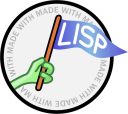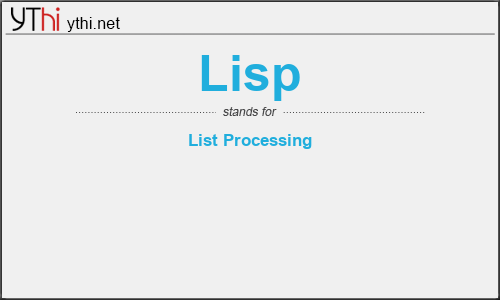What does Lisp mean? What is the full form of Lisp?
The full form of Lisp is List Processing. It’s used on Computing ,Programming & Development in Worldwide
Lisp (or LISP) is a family of computer programming languages with a long history and a distinctive, fully parenthesized syntax. The name LISP derives from “LISt Processing”. Originally specified in 1958, Lisp is the second-oldest high-level programming language in widespread use today; only Fortran is older (by one year).
Lisp was originally created as a practical mathematical notation for computer programs, influenced by (though not originally derived from ) the notation of Alonzo Church’s lambda calculus. It quickly became the favored programming language for artificial intelligence (AI) research. As one of the earliest programming languages, Lisp pioneered many ideas in computer science, including tree data structures, automatic storage management, dynamic typing, conditionals, higher-order functions, recursion, the self-hosting compiler, and the read–eval–print loop.
Common Lisp is the modern, multi-paradigm, high-performance, compiled, ANSI-standardized, most prominent (along with Scheme) descendant of the long-running family of Lisp programming languages.
Common Lisp is known for being extremely flexible, having excellent support for object oriented programming, and fast prototyping capabilities. It also sports an extremely powerful macro system that allows you to tailor the language to your application, and a flexible run-time environment that allows modification and debugging of running applications (excellent for server-side development and long-running critical software). It is a multi-paradigm programming language that allows you to choose the approach and paradigm according to your application domain.



Leave a Reply
You must be logged in to post a comment.